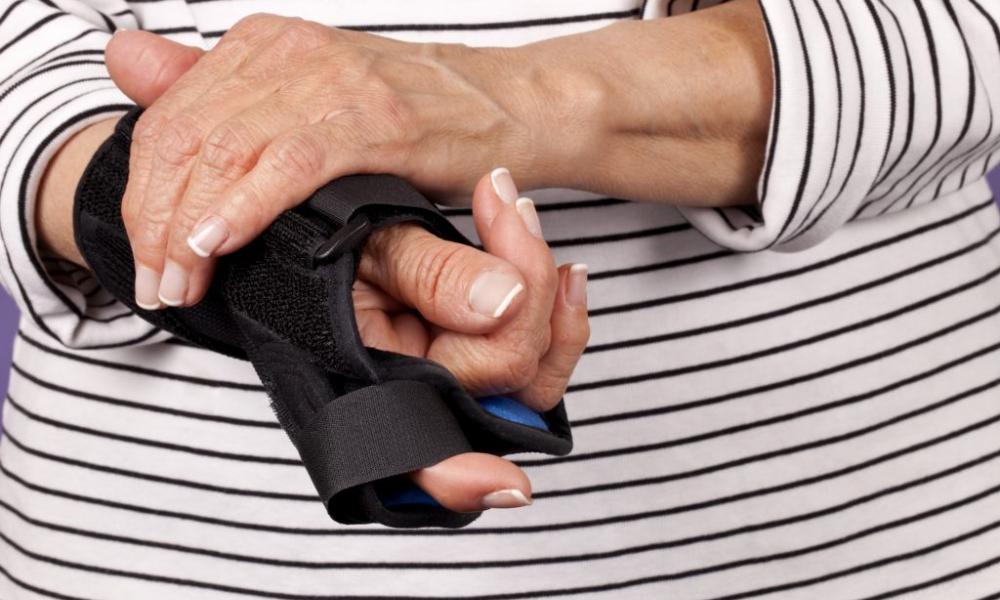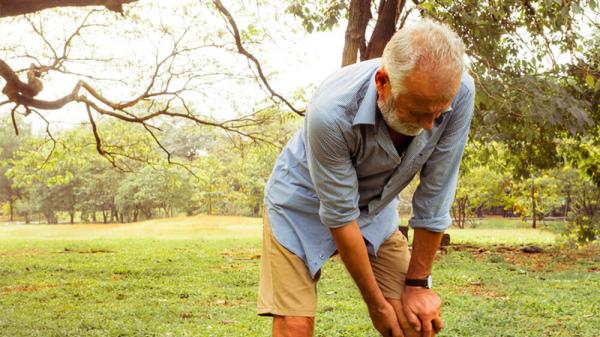
What are wrist and hand splints?
Wrist and hand splints may be recommended for you if you need protection and support for painful, swollen or weak joints in your hands or wrists. Their designs make sure you position your wrist and hands correctly.
There are two types of hand or wrist splint:
- splints used for resting joints of the wrist and hand
- splints used to support work done by the hands.
Resting splints
Resting splints support your joints when you’re resting and can help to ease pain and inflammation. They can be useful if you have a painful flare-up of psoriatic arthritis (PsA) or a period of joint discomfort, when you may need to rest your hands for short spells during the day or night.
Resting splints are usually made from a moulded thermoplastic and are fitted with Velcro fastening straps. They’re normally custom-made by your physiotherapist, occupational therapist or orthotist.
Why should I wear a resting splint?
You may find that a resting splint:
- reduces wrist and hand pain
- rests and supports your wrist and hand in the correct position
- helps to reduce swelling and morning stiffness.
When should I wear a resting splint?
You should wear your resting splint:
- overnight or occasionally during the day when resting
- during flare-ups or when you have painful joints
- as advised by your therapist.
How do I put it on?
- Undo the straps.
- Place your hand into the splint so that it’s in contact with the palm of your hand and there’s no space between your wrist and the splint.
- If there’s a thumb section make sure that your thumb is also in contact with the material.
- Do up the straps – not too tight – starting with the strap nearest your elbow.
You may find it helpful to leave the strap over the fingers done up so that you can slide your hand in or out. This means there’s one less strap to undo.
Working splints
Working splints support your wrist and hand joints while you’re using your hands. They can be worn when you carry out daily tasks and should make the job less painful. They can also help by keeping your wrist joint in an efficient position when doing a job and may help to make your wrist and hand feel stronger. However, because these splints support your wrist and hand firmly they may also make these joints feel a little less flexible.
Working splints are usually made of an elastic or light synthetic rubber-type fabric (e.g. neoprene) with Velcro straps. They’re usually available to purchase from physiotherapists, occupational therapists, medical device suppliers and pharmacies.
Why should I wear a working splint?
You may find that a working splint:
- gives your wrist or thumb support while carrying out activities that would normally be painful
- makes jobs easier to manage
- increases your grip strength
- helps protect and support your wrist or thumb
- helps reduce or prevent wrist or thumb pain.
When should I wear a working splint?
You should wear your working splint:
- during activities that cause you pain
- when your wrist or thumb is swollen
- when your wrist or thumb feels weak
- when you’re experiencing more discomfort than usual
- as advised by your therapist.
If you want to wear any type of working splint while driving, contact your insurance company first for advice about whether your cover will be affected.
For further information contact a member of your rheumatology team or the supplier of the splint.
Wrist working splint
This is a wrap-around splint that has a metal bar inserted in a pocket on the palm side of your wrist. This helps to stabilise your wrist joint in a comfortable and efficient position.
How do I put it on?
- Undo the straps.
- Place your hand into the splint so that the supporting metal bar is fitting closely into your palm.
- Roughly line up the edges.
- Do up the straps – not too tight – this time starting with the strap nearest your wrist, as this is the narrowest part (if you start with the strap nearest your elbow it tends to push the splint down and restrict movement at your fingers. This isn’t the case for resting splints, which you fasten from your elbow first).
Wrist wrap working splint
This is a wrap-around splint that gives light support to your wrist.
How do I put it on?
- Place the loop over your thumb.
- Take the long section of the support round the back of your wrist and wrap around, pulling slightly.
- Do up the strap.
Thumb spica working splint
This is a wrap-around splint that goes around your thumb and wrist. Some have an extra support for the thumb joints. This helps to stabilise the thumb.
How do I put it on?
- Undo the straps.
- Place the reinforced strip on top of your thumb joints.
- Do up the straps – not too tight.
Caring for your hands
Check your skin regularly for any signs of redness or soreness – if your skin is sore when you wear your splint then contact your rheumatology department or the supplier of the splint. It may be that you’re allergic to the material of the splint, or that it’s rubbing and causing too much pressure on your skin.
Don’t wear your splint all the time, otherwise your joints may become stiff. Don’t wear your working splint overnight unless you’ve been told to by your therapist or nurse.
When you take the splint off, make sure that you do some gentle wrist, finger and thumb exercises to help stop your joints from stiffening up.
Stop wearing your splint if it:
- rubs or causes pain
- doesn’t fit anymore or is worn out
- leaves red marks or makes your fingers tingle.
Caring for your splint
Resting splints
Clean your resting splint by wiping it with a damp cloth. You may use warm, soapy water or a mild detergent. Use a towel to dry it and don’t store it on a sunny window sill or near a radiator.
Working splints
When carrying out some activities wear cotton or rubber gloves over the splint to help prevent it from getting dirty or wet, for example when gardening or cleaning.
If the splint contains a metal bar you should remove it (if possible) before the splint is washed. Check the position of the bar and be careful to replace it in the same position after washing the splint.
Working splints can be hand washed in warm soapy water and then air-dried. Some splints can be washed in a washing machine, but you should check the label. It’s a good idea to place the splint in a pillowcase first to prevent the Velcro attaching to other washing.
How can I get a splint?
Resting splints
Most rheumatology departments will have members of the team who can make these splints for you, including physiotherapists, occupational therapists and orthotists. Resting splints are also sometimes available from medical device suppliers and online.
Working splints
Most rheumatology departments and occupational therapy or physiotherapy departments working with a rheumatology service will stock working splints.
They can be purchased from some medical device suppliers, pharmacies, sports shops, mobility equipment shops and online.
We don’t recommend that you buy splints yourself unless you’ve received advice from your rheumatology team, so you can be sure a splint purchased online is appropriate and effective for you.
You shouldn’t borrow or use other people’s splints, or let them use yours, as they won’t have been designed to suit your own needs.










